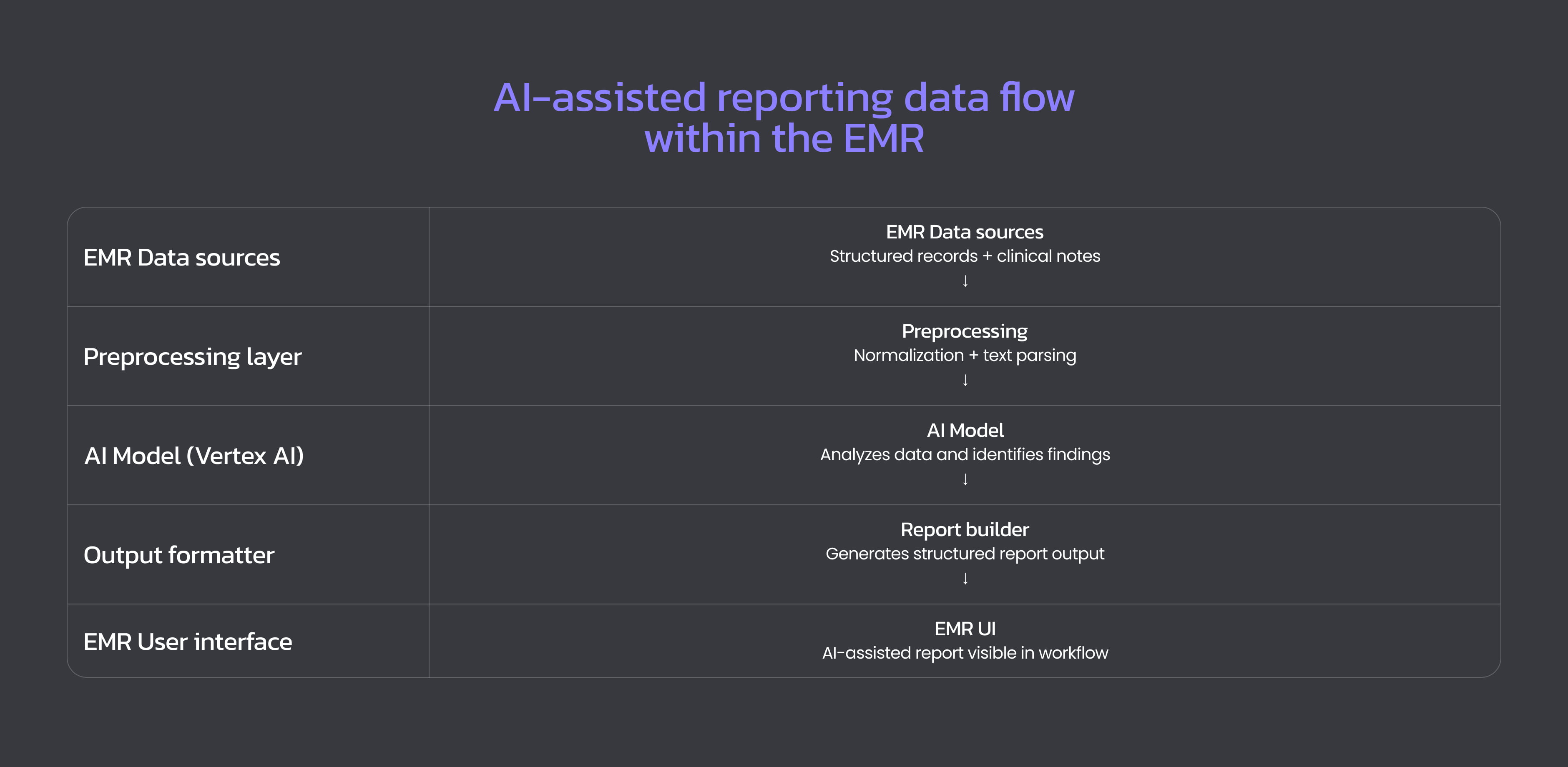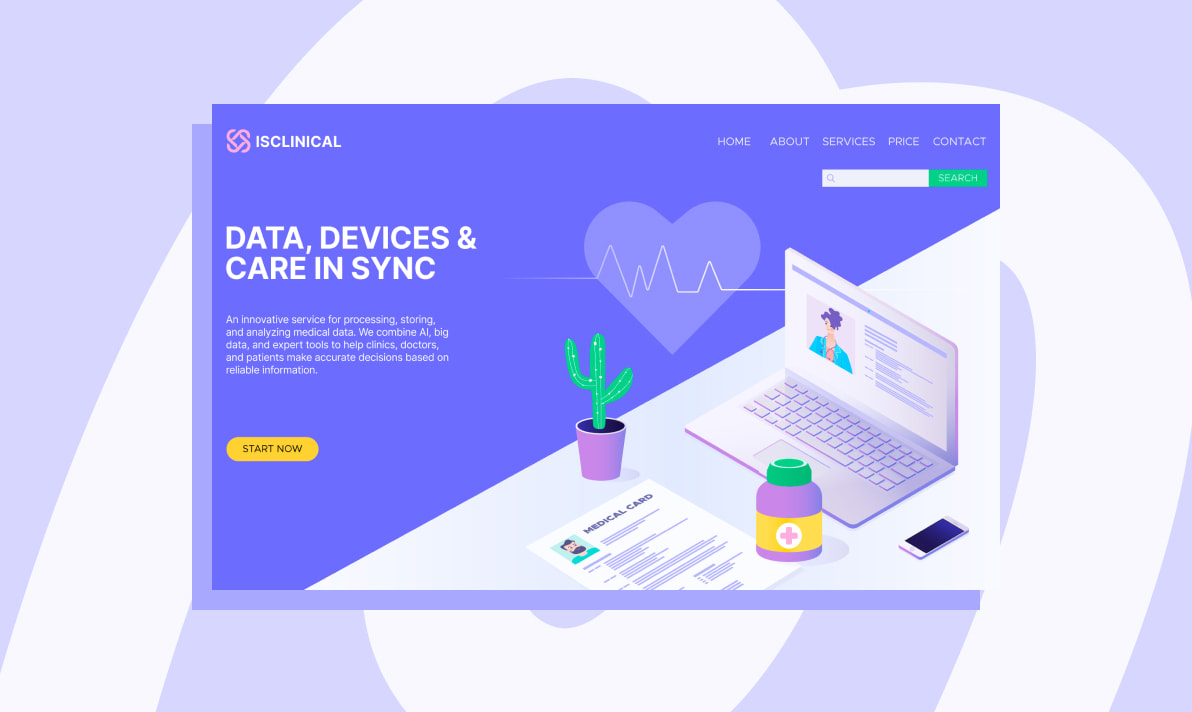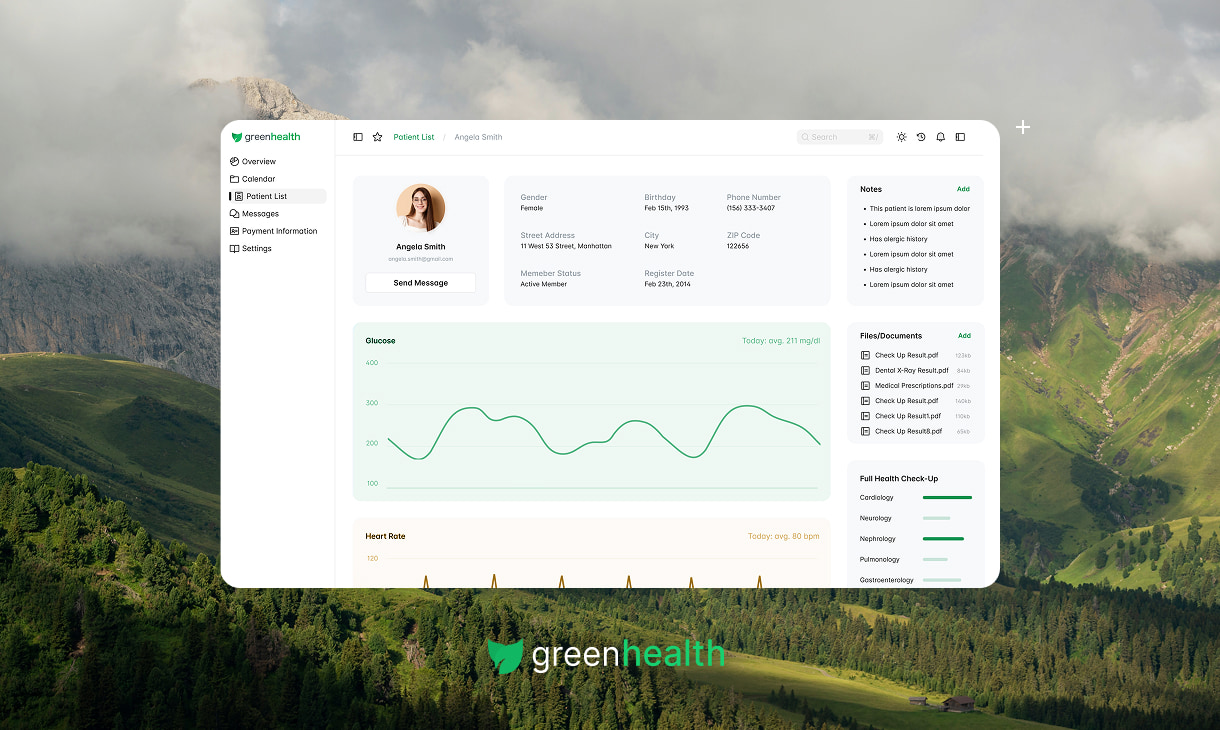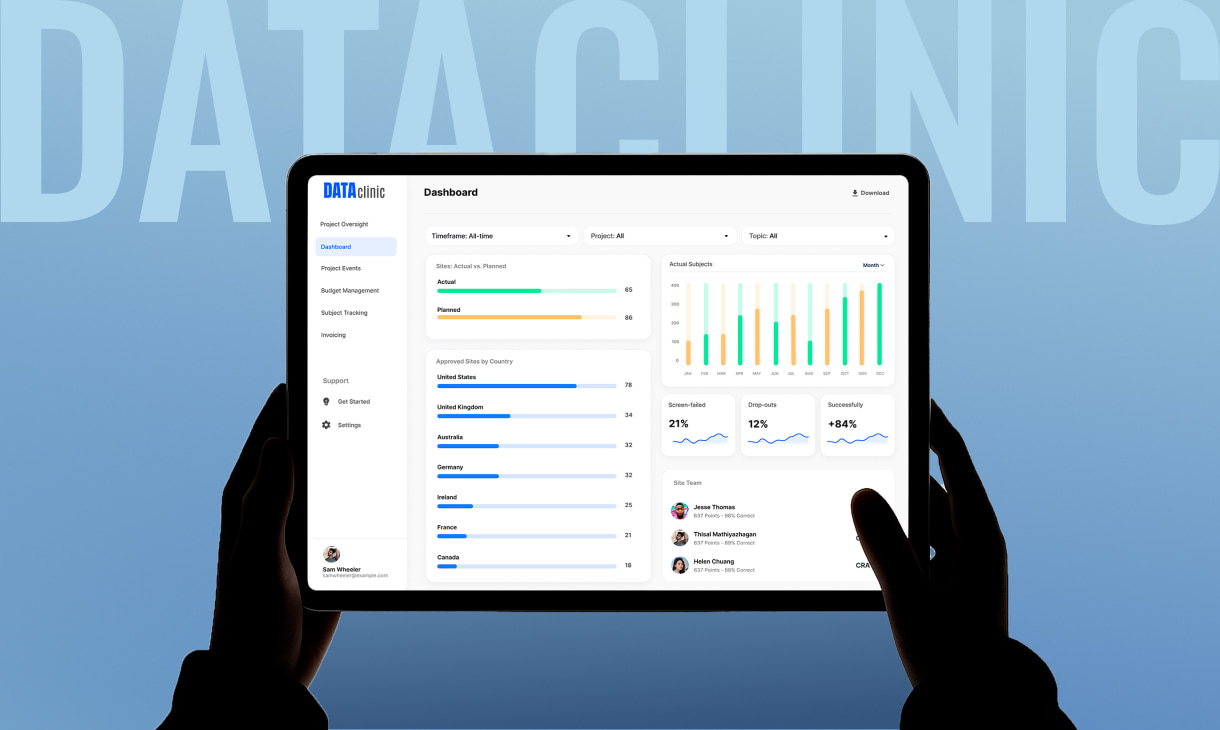About the client
Based in the United States, the client develops enterprise software for healthcare providers. Its EMR platform helps hospitals and clinics manage patient records, coordinate care, and meet strict regulatory requirements. Over the years, the system became a core tool for day-to-day operations across multiple facilities, reducing administrative effort and supporting more consistent clinical workflows.
Country:
USA
Industry:
Healthcare software
Service:
AI integration for EMR/EHR systems
Duration
2023 – ongoing
Model:
B2B
Team size:
1 Business Analyst, 2 AI/ML Engineers, 2 Backend Developers, 1 DevOps Engineer, 1 Front-end Developer
Fast and reliable data handling is critical in healthcare systems as clinical records grow in volume and complexity. Manual reporting and review still take time and often lead to uneven results, even in advanced EMR systems. For vendors serving hospitals and clinics, that means higher costs and slower adoption.
Beyond being a global trend, AI offered real practical value for the company. It could take over repetitive yet critical tasks, such as generating reports, reviewing data for inconsistencies, and assisting clinicians with quick, data-based decisions. The goal was to reduce manual effort and improve the system’s accuracy and usability in real clinical settings.
Client’s challenge
The company needed engineering support to introduce AI into its product. Building a reliable model and integrating it into a regulated EMR environment required specific skills in data science, backend architecture, and compliance. Recruiting such specialists locally proved difficult and time-consuming. To meet release deadlines and control costs, the company decided to bring in an external engineering partner.


- No in-house expertise in applied AI
- Patient data stored in both forms and free-text notes
- Heavy manual effort in preparing and reviewing reports
- New AI features needed to work inside existing clinician workflows
- Need to maintain HIPAA / HITECH compliance
Solution
Neklo’s team extended the client’s EMR platform with AI features for automating reports and assisting in clinical data review.
Architecture and stack
We used PyTorch to design and train the AI models behind report automation and data analysis. After training, we deployed the models on Vertex AI within the client’s Google Cloud environment, where they automatically adjust the amount of processing power based on load.
Data flow and integration
Integrating AI into an existing EMR was not a plug-and-play task. Data formats differed across modules, and some were not suitable for direct model input. Our engineers tested several options for preparing and routing the data — from using intermediate buffers to direct API calls — before choosing a direct, API-based setup with in-memory preprocessing. This approach was fast enough for executing real-time reporting and fit into the EMR’s existing security and compliance environment. They also adjusted the preprocessing logic to handle uncommon or irregular data patterns in clinical notes, like typos in doctors’ notes or terminology misuse.
Compliance and security
We also made sure the new AI functions followed HIPAA and HITECH rules. The automation worked entirely inside the EMR’s secure environment: the module processed de-identified data through encrypted APIs; each operation used role-based access control linked to EMR user permissions; all AI requests were logged for audits, including user, time, and data type; no patient information was stored or cached outside the EMR.
User interface integration
On the front end, we added new functionality to the existing React interface, enabling clinicians to create AI-assisted reports and view alerts without needing to open another app, switch tabs, or change their workflow.
Show all challenges


The process
Having a solid expertise in AI solutions for healthcare, we knew exactly how to address the client’s business goals.

1. Requirements Alignment
A cross-functional team of AI engineers, backend developers, DevOps specialists, and a business analyst worked with the client’s stakeholders to review existing workflows, map data sources, and define integration points within the EMR platform.

2. Prototyping and Validation
Once the scope and requirements were agreed, we built a proof of concept to test several machine learning approaches. The goal was to ensure the model could handle the type, quality, and volume of the client’s data and reach the level of accuracy needed for real use, for example, detecting unexpected patterns without producing false positives. The prototype helped verify data consistency, tune preprocessing logic, and validate model outputs before production rollout.

3. Project Management Routine
Throughout the engagement, the teams worked in shared Jira and Confluence spaces, held daily check-ins via Slack, and tracked progress against delivery milestones. We ran regular demo sessions for the client to review intermediate results and clarify expectations around data handling and report outputs. This helped refine the solution as the model was tested on real clinical data and keep the project on schedule.
Technologies
Front-end

Material UI

React

Redux-Toolkit
Back-end

Cloud SQL

Elasticsearch

FastAPI

GraphQL

Python

Redis
AI/Data

Anomaly Detection

In-memory

Models

Preprocessing

PyTorch

Vertex AI
DevOps / Infrastructure

Cloud Functions

Cloud Healthcare API
.svg)
Control (RBAC)

Docker

End-to-End Encryption

Google Cloud Platform

Kubernetes (GKE)

Role-Based Access
Deliverables
AI-assisted reporting feature
Clinical data preprocessing
Model training and evaluation
Model deployment in the client’s environment
Secure EMR data integration via APIs
Role-based access control for AI features
Audit logging for compliance
UI updates to support in-workflow use
Result
Introducing machine learning and AI-driven reporting improved both the speed and clarity of clinical documentation. Clinicians saved an average of 13 minutes per patient, which, in a typical outpatient schedule, frees several hours per day that would otherwise be spent on manual record updates. Documentation became more consistent, reducing the need for clarifications and follow-up edits.
With less time spent entering data during visits, clinicians had more attention available for conversation and examination. In patient surveys, 93% reported that care providers felt more present and engaged. Overall workflow efficiency increased by 24%, helping clinics handle daily caseloads with less time pressure.
13
min
Saved per visit
+65
%
Documentation quality
93
%
Patient engagement rating
+24
%
Encounter efficiency per hour

























.png)



